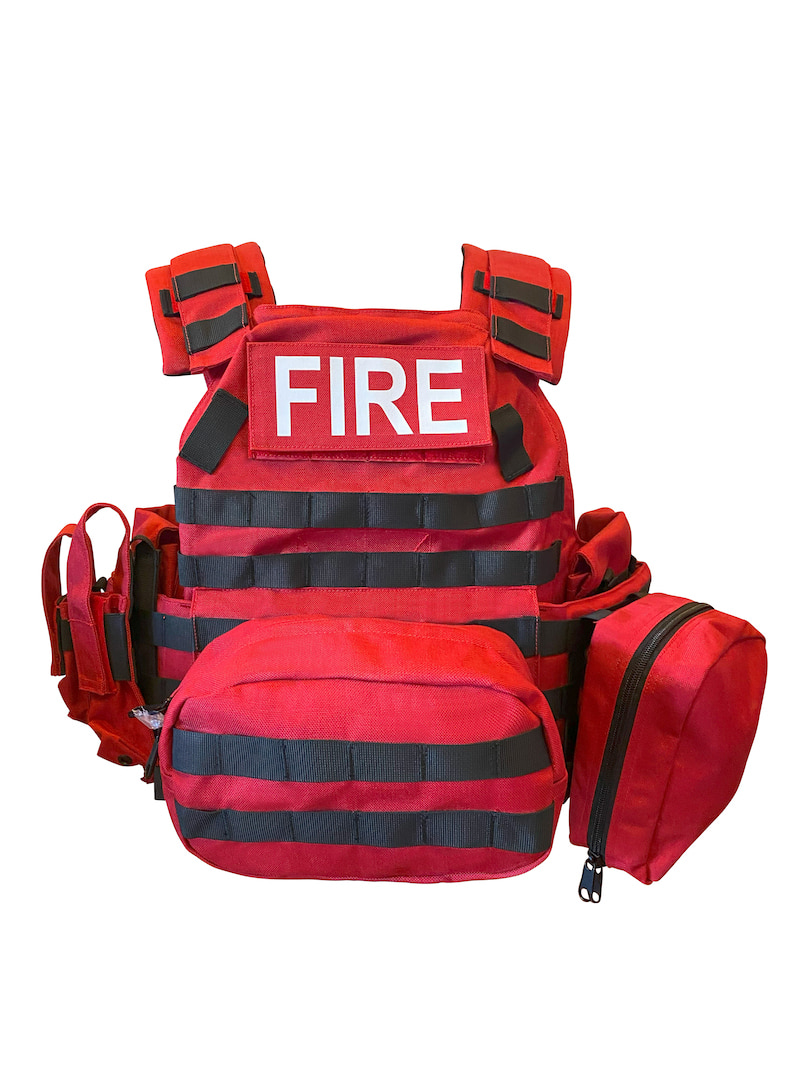
Body Armor for Firefighters: Protecting Our Firefighters
The Vital Importance of Body Armor for Firefighters
Firefighting is an inherently dangerous profession. Every day, firefighters put their lives on the line to protect our communities from the devastating effects of fires. While most people associate firefighting with battling blazes, these brave individuals face a myriad of other hazards. This is why it is crucial for firefighters to purchase and wear body armor. In this blog post, we will delve into the reasons why body armor is essential for firefighters, explore the specific risks they face, and highlight how body armor can save lives.
The Expanding Role of Firefighters
Modern firefighters are not only tasked with extinguishing fires; their roles have expanded to include responding to a wide range of emergencies. From hazardous material spills and natural disasters to terrorist attacks and active shooter situations, firefighters are increasingly finding themselves in dangerous scenarios that go beyond the traditional fireground.
Why Body Armor is Crucial for Firefighters
- Protection from Ballistic Threats In active shooter situations, firefighters are often among the first responders on the scene. These scenarios are unpredictable and can quickly turn violent. Wearing body armor such as bullet-resistant vests design for fire fighters provides crucial protection against firearms, increasing the chances of survival and enabling firefighters to perform their duties without compromising their safety. In addition, head protection such as ballistic helmets, are also an important part for a firefighter’s body armor stock.
- Defense Against Stabbing and Slashing Firefighters frequently encounter individuals in distress, including those who may be violent or mentally unstable. In such instances, there is a risk of being attacked with sharp objects. Body armor designed to protect against stab and slash injuries can be life-saving in these situations, whether ballistic vests with integrated stab protection, or vests that provide only stab protection.
- Enhanced Safety in Hazardous Environments Firefighters work in environments where debris, shrapnel, and falling objects are common hazards. Body armor offers an additional layer of protection against blunt force trauma, reducing the risk of serious injury from these threats. Ballistic helmets can help reduce brain trauma for shrapnel incidents.
- Chemical and Biological Protection Responding to hazardous material incidents and potential terrorist attacks involving chemical, biological, radiological, and nuclear (CBRN) agents requires specialized protective gear. Gas masks are designed to provide limited protection against these threats, helping firefighters can safely operate in contaminated environments. In some situations, gas masks are required by firefighters to help protect them from tear gas or pepper spray that may be used by law enforcement.
Real-Life Scenarios Highlighting the Need for Body Armor
- Active Shooter Incidents In recent years, there has been an alarming increase in active shooter incidents. Firefighters, often acting as first responders, are at significant risk during these events. The tragic shooting at a municipal building in Virginia Beach in 2019 underscored the importance of body armor. Firefighters on the scene faced the threat of gunfire while attempting to rescue victims and secure the area. Having body armor can make a critical difference in such high-risk situations.
- Violent Individuals and Domestic Incidents Firefighters are regularly called to assist in domestic violence incidents and other situations involving violent individuals. In 2017, a firefighter in Long Beach, California, was fatally stabbed while responding to a fire at a home. This heartbreaking event highlights the potential dangers firefighters face and the need for protective gear to mitigate these risks.
- HazMat Responses Firefighters often respond to hazardous material spills and chemical leaks. In these scenarios, the risk of exposure to dangerous substances is high. Body armor with chemical-resistant properties can provide an added layer of protection, allowing firefighters to operate more safely in these environments.
Choosing the Right Body Armor for Firefighters
When selecting body armor, firefighters must consider several factors to ensure they are adequately protected:
- Threat Level The bullet-resistant vests or ballistic helmets should be rated to protect against the specific threats firefighters are likely to encounter. This includes ballistic threats, stabbing, slashing, and blunt force trauma, and different rounds such as handguns or rifles.
- Comfort and Mobility Firefighting is physically demanding, requiring a full range of motion. Bullet resistant vests for firefighters, and tactical ballistic helmets, must be comfortable and allow for unrestricted movement to ensure that firefighters can perform their duties effectively.
- Durability Firefighters operate in harsh conditions, so the body armor must be durable and able to withstand the rigors of the job. This includes resistance to heat, flames, and exposure to hazardous substances.
- Compatibility with Other Gear Body armor should be compatible with other protective gear, such as turnout gear, helmets, and SCBA (self-contained breathing apparatus). This ensures that firefighters can wear all necessary equipment without compromising their safety or performance.
Conclusion: Investing in the Safety of Our Firefighters
The role of firefighters has evolved, and so have the dangers they face. The traditional fireground hazards are now accompanied by new and unpredictable threats, making it more important than ever to ensure that our firefighters are adequately protected. Body armor is a critical piece of equipment that can save lives and allow firefighters to perform their duties with greater confidence and security.
Investing in high-quality body armor is an investment in the safety and well-being of our firefighters. By recognizing the importance of this protective gear and making it a standard part of their equipment, we can better protect these everyday heroes who risk their lives to protect us.
Looking into purchasing body armor, such as vests, or helmets, for your team? Contact a tactical specialist at ExecDefense USA and we can help guide you on the right armor to order.
Keywords: body armor for firefighters, firefighter safety, ballistic protection, firefighter protective gear, firefighter hazards, firefighter body armor benefits, firefighter equipment, firefighter safety gear, body armor types for firefighters, firefighter protection solutions












